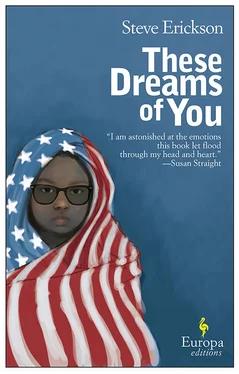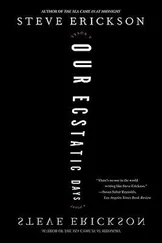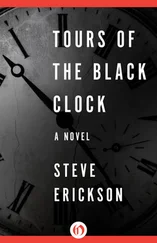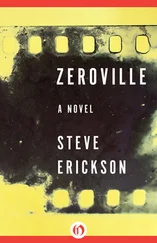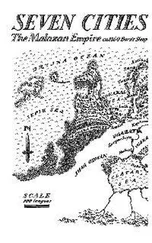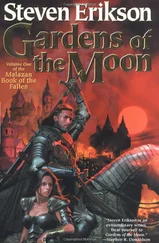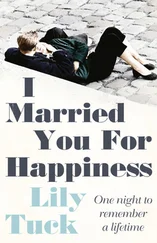If no one can be sure where the frequency comes from, it makes sense anyway for Jasmine to try and return Molly to its source. Fifteen months after her daughter’s birth, the little girl already walking adeptly, the mother spots a familiar redheaded rock star coming out of a hotel on the rue des Beaux Arts off St. Germain-des-Prés, and she pivots, sliding around the corner of rue Bonaparte just as he turns to do a double-take. Some mysterious music from some unknown place has gotten his attention. The next day from the window she spots him in the street below as though searching, and she lets loose the curtain from her fingers just as he looks up; she hurls a blanket over the child to smother her broadcast. The next morning the girl finds outside her door a small box.
Disregarding her mother’s standing directive about answering doors to strange people and small boxes, the girl says, “Mum?” lifting the box’s contents in her two small hands: the small camera from Berlin that catches images and strands them mid-air on their way to film.
When they move back to Berlin, taking a flat in Schöneberg not far from the one where Jasmine lived before, the small girl clicks ghost pictures from Checkpoint Charlie to the Brandenburg Gate. Sometimes the pictures themselves are ghosts, disappearing into the electric ether; sometimes the pictures are of ghosts, people who aren’t there when she looks up from the camera. Sometimes the strangers in her pictures are ghosts of the past, sometimes they’re ghosts of a future the girl may or may not know. Everywhere she goes, she trails visual octaves looking for a home; for years the only thing she prizes more is a paperback that her mother stole, with a drawing of her inside.
Not far from Checkpoint Charlie, near what used to be a recording studio and, before that, an old movie studio, a southern part of the Wall unravels into a stone labyrinth between east and west, provoking confusion on both sides. Lovers meet there and children play, and when Molly’s mother takes her to it, the child hides in the maze of concrete, some of the passages sheltered by the debris of surrounding construction, others made blue tunnels by the sky above. Molly winds through the maze to the center and her mother always finds her, and only when Molly is older does she understand that Jasmine follows her music, left by the child like breadcrumbs.
Raised among Turks and Muslims, every now and then the girl goes to the local mosque where the constant humming from her is frowned upon. At the age of twelve she’s there at the Wall’s fall, taking pictures of people dancing along the edge, wine bottles in hand, her own small tune filling the pauses of Beethoven’s Ode to Joy.
Like everyone who’s grown up in Berlin, she feels the sense of liberation, as a line down the center of the century is erased and replaced by a hole. The fallen wall is the city’s ghost limb, history an amputee that feels an appendage no longer there; but with the fall, something dark is unleashed along with the dream. Even the girl feels the shift in sentiment. When the army of skinheads that calls itself the Pale Flame marches down the Unter den Linden and screams at the mother watching from the sidewalk with her young teenage daughter — who already has the body of a woman — Molly is old enough to understand what foreboding is.
Is it the arc of the imagination bending back to history, or just coincidence the night that she seals her mother’s fate? Molly enters a U-Bahn station near what used to be Checkpoint Charlie, not far from the Hansa recording studio, when she comes upon members of the Pale Flame beating a middle-aged man in the street. She darts into the shadows nearby, thanking the night for the color of her skin. Developed at sixteen years old and taught by her mother to keep herself covered and wary of male crowds, she’s terrified, and only when the skinheads finish with the man in the street and leave him lying crumpled there does she run to him.
She hasn’t seen a dead body before so she can’t be certain about this one, but if this isn’t dead then it ought to be what dead looks like. Kneeling by him, clutching all her papers and books, she barely can bring herself to whisper to him, afraid she’ll make a sound, when to her horror she hears the song that’s coming through her body grow louder, like someone has turned up her volume.
The body in the street stirs. She’s so startled that she jumps back and flees, dropping by his side the old battered paperback with the drawing of her mother.
A few years ago, the first time she picked up the book, it wasn’t her mother’s picture she noticed. Molly just had turned twelve and it was the autumn the Wall fell and she still remembers, coming through the window of the flat where they lived, the music in the distance so celebratory and defiant that it drowned out her own; she picked up the paperback and there cascaded from its pages a folded newspaper clipping from more than two decades before. The girl stood in the middle of the flat scrutinizing the face of the man in the grainy newsprint photo when an astounded Jasmine said, “Where did you get that?”
The way she said it, the daughter thought she had done something wrong. “It was in the book,” Molly said, frightened.
Jasmine had no idea how the clipping got there. She had looked for it everywhere before the book ever came into her vicinity or possession. Something strange happened in this moment that Molly discovered the clipping: When Jasmine reached for it, instinctively the twelve-year-old pulled it back. “Give it,” Jasmine said quietly.
Molly looked again at the man in the photo. “He’s very sad,” she said to her mother.
“Yes,” Jasmine said and turned toward the music coming through the window from the Wall. “He would have liked to be here now, to see this. . and to hear it,” and she smiled, “though he never knew much about music.”
Molly said, “Is he my father?” and Jasmine’s jaw dropped. “No,” the mother answered, composing herself, “he’s not.” The girl clutched the clipping, looking at her mother quietly. “He’s not,” repeated Jasmine, “I would tell you.” Molly handed over the clipping and the book, and her mother took them, opened the book almost absently, regarding the drawing of her on the inside front page.
Now, only after Molly has run into the mouth of the U-Bahn does she realize that she has dropped the book at the side of the man in the street aboveground. At first she dismisses any possibility of going back for it. The skinheads might return, the police might come or the beaten man might die in her arms or, rousing himself to consciousness, hurt her in some rush of adrenaline. No, she concludes, she can’t go back. She has but to step onto the train and be swept to the sanctuary of Berlin’s tunnels before the last five minutes overwhelm her like a wave.
But then she knows she must go back. The paperback she’s dropped is one of life’s markers, one of experience’s receipts that may be destined to one day disappear; but not on this night, the sixteen-year-old decides, not in this way. Forget sentiment: Her mother’s picture is in the book, which is to say that Molly has left behind identification; and before the doors close — the arc of the imagination bending back to the history it can’t compete with — she steps from the train back onto the landing.
When she gets back to him, the man lying in the road shows no signs of having stirred further. No one else is in sight. There’s no sound of approaching sirens, responding to a witness’ call; the paperback is in such plain view that she can’t believe she didn’t see dropping it. She tiptoes to the body, looking around furtively, then snatches the book from the ground.
Читать дальше
